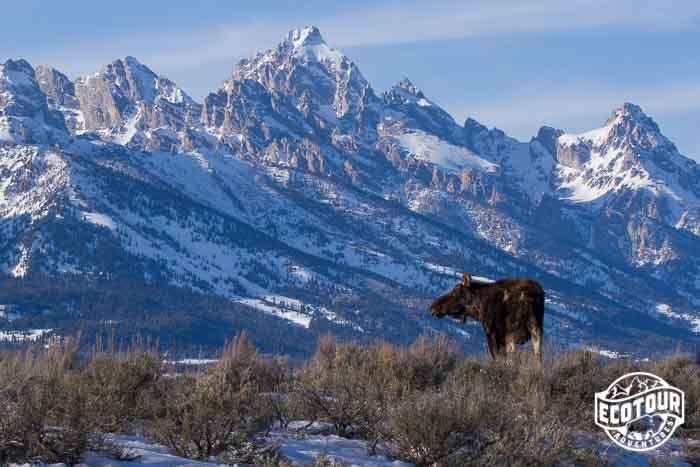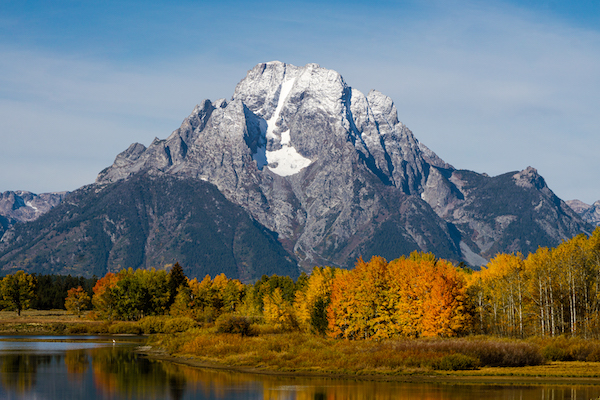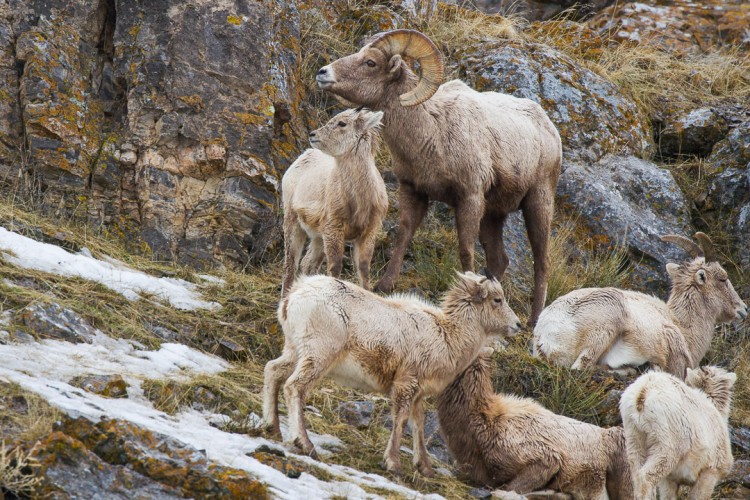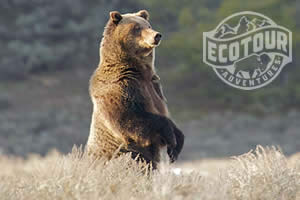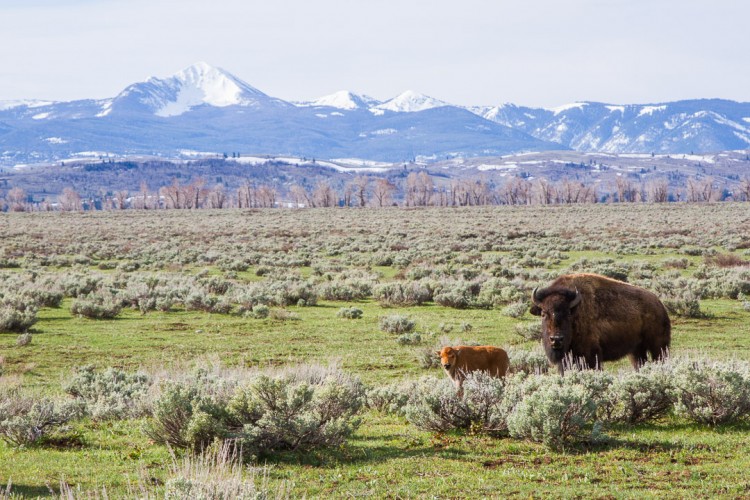
The Jackson Hole Valley is springing to life as temperatures continue to warm and snow begins to recede up the mountain sides of Grand Teton National Park. Roads in Grand Teton and Yellowstone National Parks, formerly closed for the winter, are beginning to open, offering fresh opportunities for exploration.
May is one of our favorite times to observe the abundant wildlife of Jackson Hole. Grizzlies and wolves are often visible in both Grand Teton and Yellowstone National Parks. Migratory birds are arriving in the valley every day, our great mammal migrations continue to follow melting snows towards the high country. Our first baby bison and eaglets have been spotted, hinting at the flush of baby animals to come later in the month.
It’s a spectacular time of year to take a wildlife safari in Jackson Hole. Read on for the latest information on grizzly and wolf sightings, Grand Teton and Yellowstone road openings, migrating elk, deer, and pronghorn, our first baby bison observation, and more!
May means Grizzlies!
Early May has been full of grizzlies this year as the bears continue to emerge from hibernation. The cubs of grizzly 610 (a bear being studied in Grand Teton) have dispersed, going their separate ways after spending two years learning how to be a bear. Late May and June is mating season for grizzlies, and several boars (males) are courting 610.

If mating is successful, the fertilized eggs will enter stasis, halting cell division and implantation into the uterus until later in the fall. This adaptation, known as delayed implantation, allows bears to mate when food is abundant, and complete the 5 month pregnancy during winter hibernation. Over 100 mammal species use this adaptation including weasels, otters, and marsupials!
We have not yet observed any new cubs this spring, but it is likely that at least two females often observed in Grand Teton may emerge with some in tow! Black Bears are also beginning to be observed in Jackson Hole, we hope to find cubs soon.
Grand Teton and Yellowstone Road Report
As winter snow begins to quickly melt, roads in Grand Teton and Yellowstone National Park are reopening for the summer. Last week the Teton Park Road opened, providing access to Jenny Lake and other scenic locations at the base of the Tetons. Schwabacher Landing, a famous sunrise and sunset photography spot in the Snake River bottom is now open, as well as Deadman’s Bar, a boat launch for scenic and fly fishing floats throughout the summer.
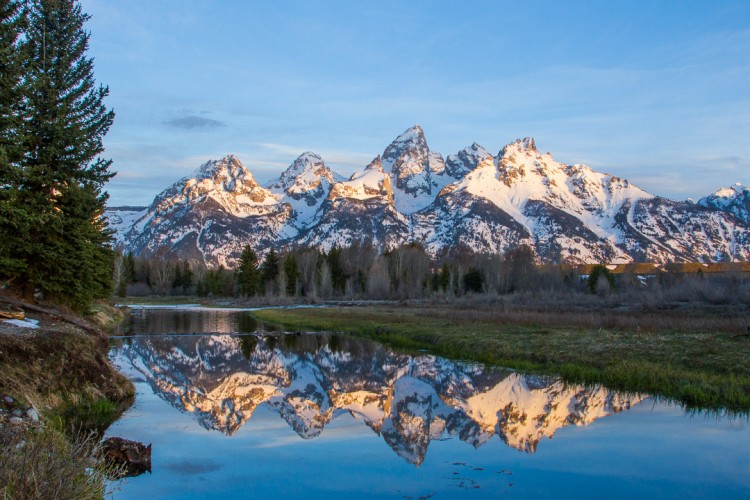
The south entrance to Yellowstone National Park opens this Friday, May 12th, just in time for our first multi day tour of the year! We start daily trips to Yellowstone from Jackson the following week. The West, North, and East (Sylvan Pass) entrances to Yellowstone National Park are now open, and Dunraven Pass (Canyon to Tower Fall) and the Beartooth Highway (Northeast Entrance) will open on May 26th.
Velvet Antlers, Return of the Pronghorn
Our deer species (elk, moose, mule and whitetail deer) have all shed antlers by now, in preparation for growing the next year’s set. This energy intensive process aids in creating a dominance hierarchy among the males. Those with larger antlers are often able to mate with more females in the fall. We have been observing all four species in velvet, a soft fuzzy tissue which protects blood vessels feeding the growing antlers that are made of bone.
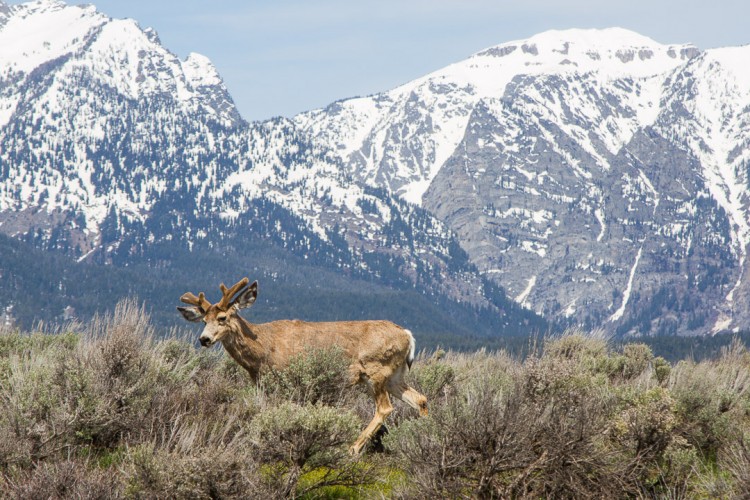
Elk continue to march north towards summer range along the base of the Teton Range in Grand Teton National Park, in the Teton Wilderness north of Jackson Hole, and as far north as the southern shores of Yellowstone Lake, over 60 miles from their winter range near the town of Jackson. We have also recently observed our first pronghorn antelope of the year. Close to 400 of them migrate to the valley along the “Path of the Pronghorn,” a 100 mile federally protected migration route returning from the south near Pinedale, WY.
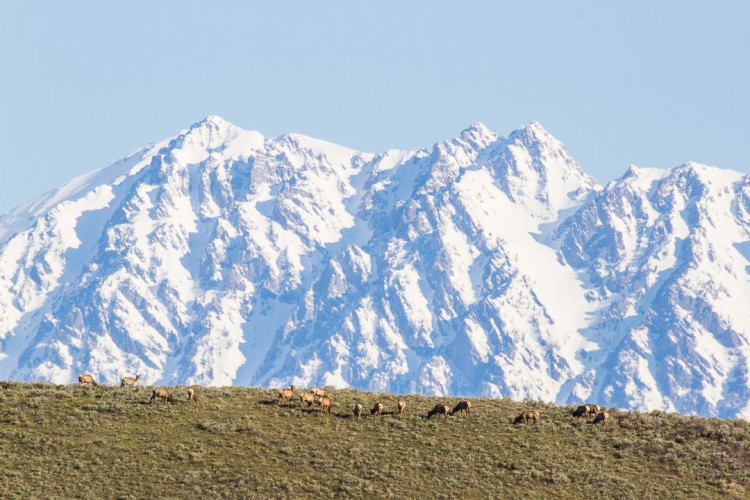
Baby Animals Begin to Emerge
Late April and early May marks the beginning of a flush of life in the Greater Yellowstone Ecosystem. Bison have begun calving, first in the Northern Range of Yellowstone National Park, then in the Jackson Hole Valley. We found our first ones just last week!
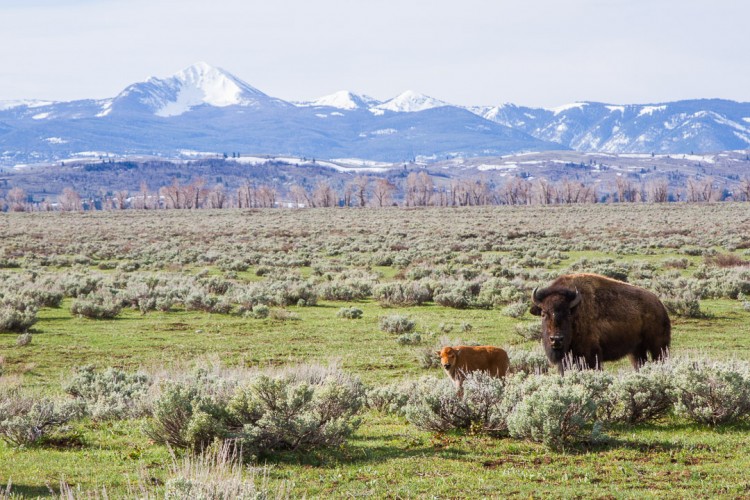
Large raptors like eagles, great horned owls, and great gray owls are beginning to hatch chicks. Due to their large size, long incubation period and full summer to rear chicks to adulthood is required.
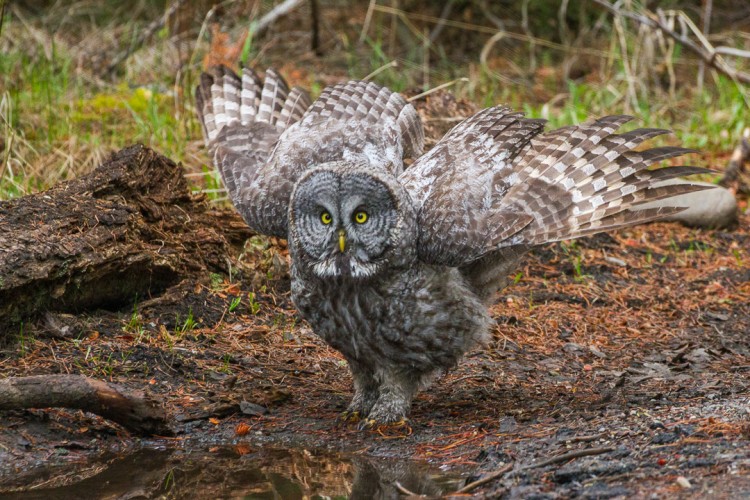
Wolves, coyotes, and foxes are denning across the Greater Yellowstone Ecosystem, and will soon emerge with pups! We have been observing a wolf pack, likely the Lower Gros Ventres, frequently in Grand Teton National Park. Later this week we head to Yellowstone’s Lamar Valley on a spring multi day trip, one of the best locations in the world to observe wolves, grizzlies and other wildlife of the Greater Yellowstone Ecosystem.
The Flush of Life to Come
Like the rush of water now coursing through the region’s rivers, a flush of life is about flood the Greater Yellowstone Ecosystem. Late May and early June brings elk and moose calves, deer and pronghorn fawns, baby birds, fox kits, wolf and coyote pups, and bear cubs. Over 1000 plant species are now beginning to flower, with a palette of color peaking in June beneath the mighty Teton Range.
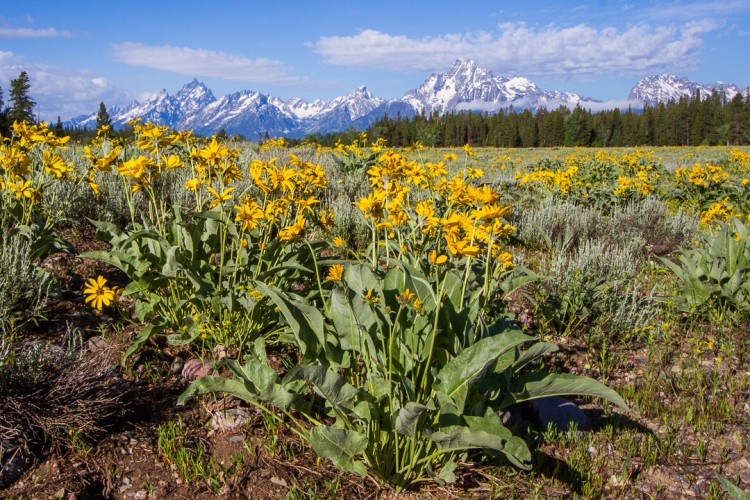
The guides at Jackson Hole Ecotour Adventures have been out observing the changing of the seasons, visiting with National Park Scientists, Geologists, Astronomers (Have you heard about the 2017 Total Solar Eclipse this August?!), and others as we prepare for the summer season. Make this summer unforgettable with a trip to Grand Teton and Yellowstone National Parks with us!
To learn more about joining a safari with Jackson Hole Ecotour Adventures visit our website or give us a call at (307) 690-9533. We hope to see you soon!
Photos and blog by Naturalist Josh Metten


